Car enthusiasts generally have a relentless pursuit of horsepower. But the pursuit triggers what sports car engineers refer to as the devil’s cycle, where bigger engines make a car heavier, and thus slower, by virtue of power-to-weight ratio. While hobbyists with time and money enjoy the pros and cons of tuning a car for maximal gains, drivers who track or auto-cross are more concerned with balancing speed and handling precision for optimal context-specific performance.
New car tuners often spend countless time and money on horsepower figures only to learn that most of it is not only unusable horsepower, but actually makes the car drive worse by neglecting to understand power in relation to driving dynamics. The concept of pursuing gains holds true for the personal defense training community. Whether it’s tracking the shot timer or lifting for personal records, the pursuit of numbers in isolation has limited benefits, with the most powerful benefit being the gratification of meeting or surpassing personal goals.
The hazard of confusing a hobby with personal defense training is in failing to discern how certain hobbies don’t relate to personal defense training. It’s easy to assume that if someone looks healthy and lean, they are fit to fight. That assumption is incredibly wrong. Bodybuilders appear to have great physique but are far from being in fighting shape. This is because our cardiorespiratory, musculoskeletal, and energy systems stores adapt, or “plateau,” in reaction to the task that you perform repeatedly. Thus, a 500-pound bench press may be useful if a 500-pound object falls on you while you are lying on your back, but it is not useful for pushing motions on your feet. The base of support is no longer your back. Standing on your feet to push an object engages the synergistic musculature that can kinesthetically align to share the workload of a standing and pushing motion. This means a 500-pound bench press is nearly useless on your feet. You would develop much more usable power with a standing chest press with trunk rotation.
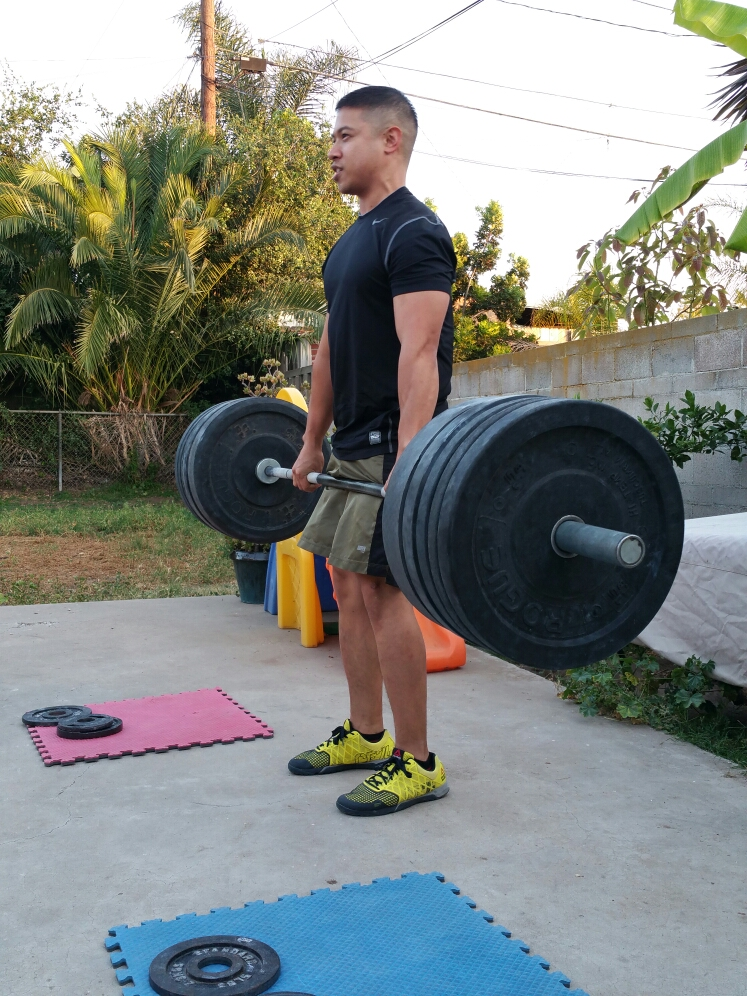
10X Crossfit member hits 285-pound deadlift as part of strength-training set. Photo: Art Belenzo
www.personaldefensenetwork.comCrossFit
Although the physical training of CrossFit generally does not include task-specific training relevant to personal defense, its greatest value lies in proactively exercising Fortitude Fitness. Our body is only as strong as we will it to be, and CrossFit is the most well-known training program that consistently exercises fortitude regardless of the physical task at hand.
Olympic Weightlifting
This can serve as a valuable tool for correcting muscle imbalances while improving overall power output. But maximal lifts are equivalent to Forced Induction (Turbo/Supercharger) in that they create more wear and tear on the internal components, including tendons and ligaments. The use of artificial stabilizers such as knee, back, or elbow braces indicates that the strengthening and recruitment of musculature are outpacing the development of joint stabilization strength. Functionally, this leaves the joints prone to incapacitating injury, rendering any gained strength useless. For functional benefits, Olympic Weightlifting should be trained with optimal target loads rather than brace-dependent maximal loads.
Functional Training
This term is used to describe task-specific training and is most well-known for mirroring movements needed for daily tasks. Most exercise training programs are isolated to frontal and sagittal planes of motion, but the power of human mobility lies in transverse motion and directional changes. These motions are what define functional training, but the term “functional training” is relative to context. There are general functional training exercises that improve daily activity, but we can narrow the specificity to improve our return on invested time and energy when emphasizing personal defense training. For the sake of distinguishing personal defense specific training from general functional training, Combat-efficient Usable Strength Training (CUST) was developed for defense-specific athletic training. The movements include motions similar to conventional exercises, including wood chopping, chest press, and rows. But rather than exercising the muscle groups solely in isolation, CUST is combat efficient in that the usable strength gained cumulates into actual motions and strength demands specific to personal defense related actions.
CUST is a phasic progressive training method that is subject to the individual’s muscle imbalances. If our body is our weapon, it’s critical to prime its parts for optimal and reliable performance.
1. Corrective Mobility Training: Muscle imbalances are due to injury and overused postures. These imbalances inhibit optimal mobility and power. The CMT phase works by elongating overused muscles and tightening elongated atrophic muscles for restorative function.
2. Stability Strength Training: Develops kinesthetic feedback and joint stability utilizing isometric and isokinetic training methods.
3. Strength Endurance Training: Improves glycogenic energy bias and neuromuscular patterning using training methods that include proprioceptive neuromuscular facilitation for strengthened mobility.
4. Maximal Power Training: Increases phosphogenic energy utilization and storage using plyometric and myoelectric potentiation training methods.
Here are two examples of CUST circuits:
High Compressed Ready (HCR) Circuit
Rather than doing seated rows or crunches with rotation, the HCR circuit trains your back, core, and legs in a synergistic and functional manner. Cable machines and resistance bands are valuable training tools for mirroring movements performed on your feet. Attention to kinesthetic feedback will be critical, as whole body strength and power are contingent on how well your kinetic chain works synergistically.
In these examples, training bands that provide a resistance equivalent to 120 pounds are used with a training partner who is utilizing the “door stop” accessory as a handle. Not only does a training partner ensure the correct vector of resistance, but they also develop stability strength by virtue of retention.
Walking Chest Press
This motion generates helical power by originating the applied rotational force from the rear foot, through the legs and torso as the weight transfers during the stepping motion, and through the upper body and arm. Although resistance band training may be used to develop power, it should not be confused with shadowboxing. The dynamic nature of shadowboxing risks erroneous patterning of striking skills. To integrate the power recruited through the Walking Chest Press, simply follow the circuit by shadowboxing with no resistance, and with emphasis on hand speed.
Gear Hobby
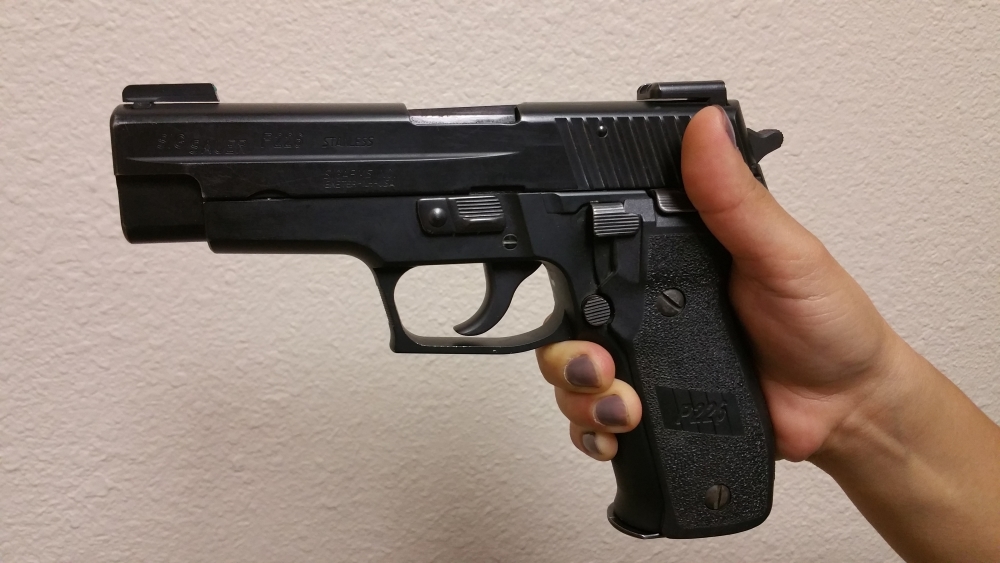
SIG Sauer P226 may be oversized for some people, includes a de-cocker that requires additional pistol manipulation tasking, and is also the result of an inconsistent Double Action-Single Action trigger press that may inhibit consistent accuracy and precision. The hammer-fired technology also sits higher, resulting in a higher bore axis that may negatively affect recoil management. Photo: author
www.personaldefensenetwork.com
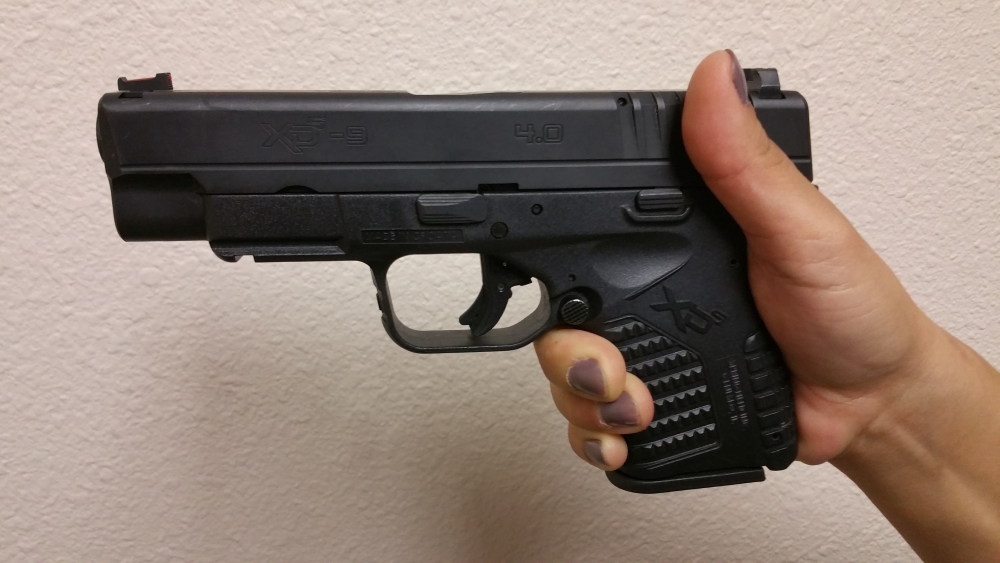
Springfield XD-S 4.0 is a modern striker-fired (MSF) pistol with a low bore axis. It does not require additional safety-related tasks because the safety mechanisms are built into the trigger and grip. The single stack and shorter grip provide a reduced profile for concealed carry and better grip functionality for smaller hands. Photo: author
www.personaldefensenetwork.com- Gun size: should fit hands for both a one - and two-handed grip with reachable magazine release and slide lock. Overall size should be chosen with respect to carry method.
- Caliber: the primary purpose of ammunition is to induce sufficient trauma to stop a threat, and in some situations, a secondary purpose of penetrating barriers.
- Accuracy and precision: barrel length, a consistent trigger, square notch sights, and a low bore axis all contribute to shooting accuracy and improved precision.
- Operational speed: reachable magazine release, free dropping magazines, reachable slide lock, and minimal safety manipulations contribute to efficient pistol manipulation when needed.
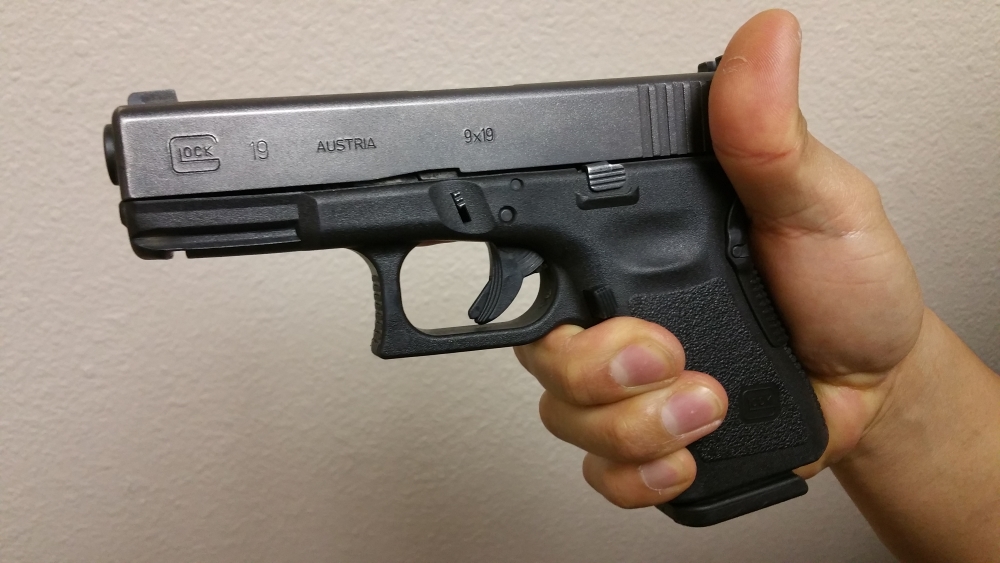
Glock 19 is an MSF pistol that provides a low bore axis, lower profile than full-sized guns, full grip for most hand sizes, and higher ammo capacity than smaller guns. But double stack makes G19 thicker and thus it has a slightly higher carry profile. Photo: author
www.personaldefensenetwork.com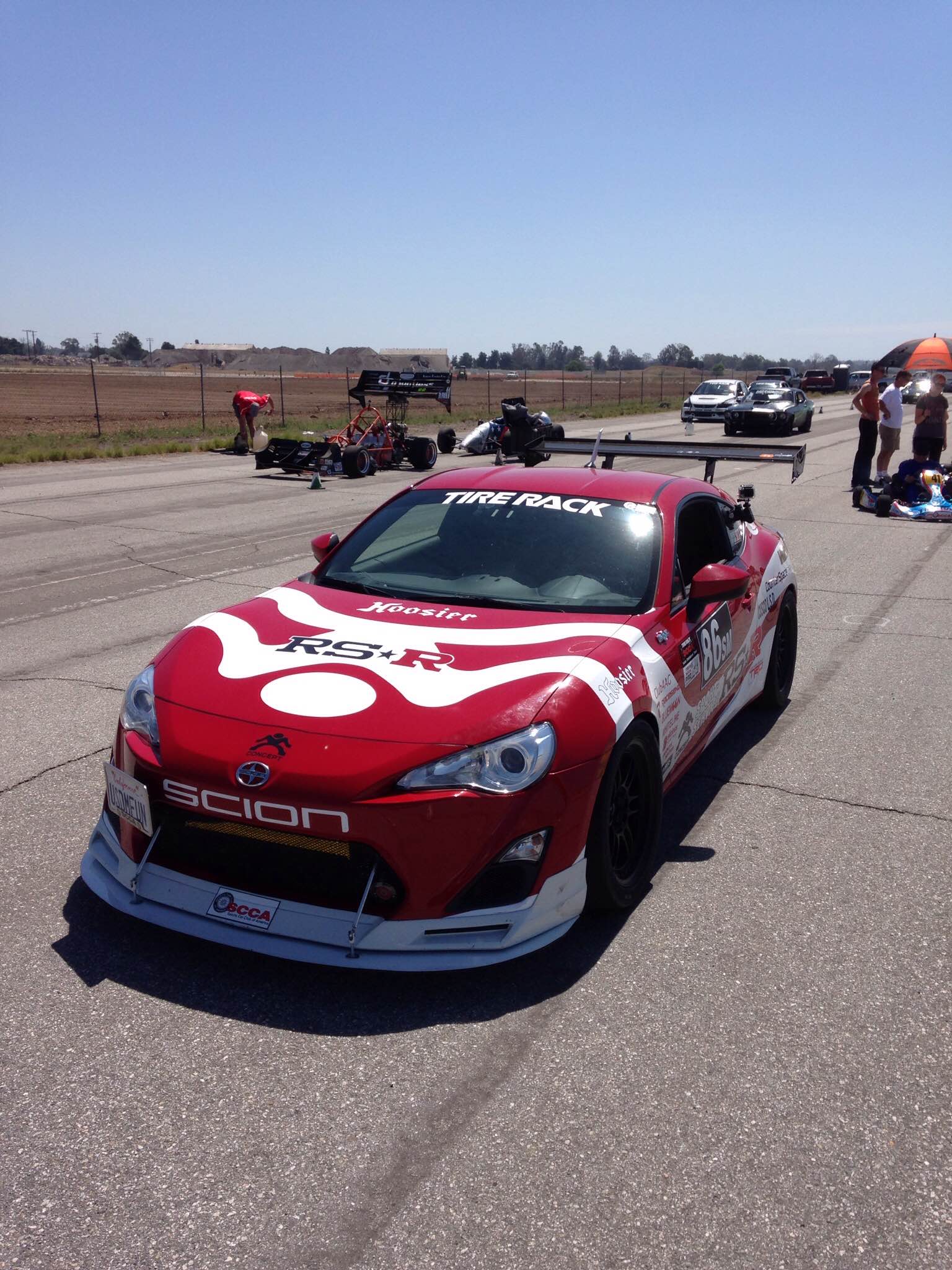

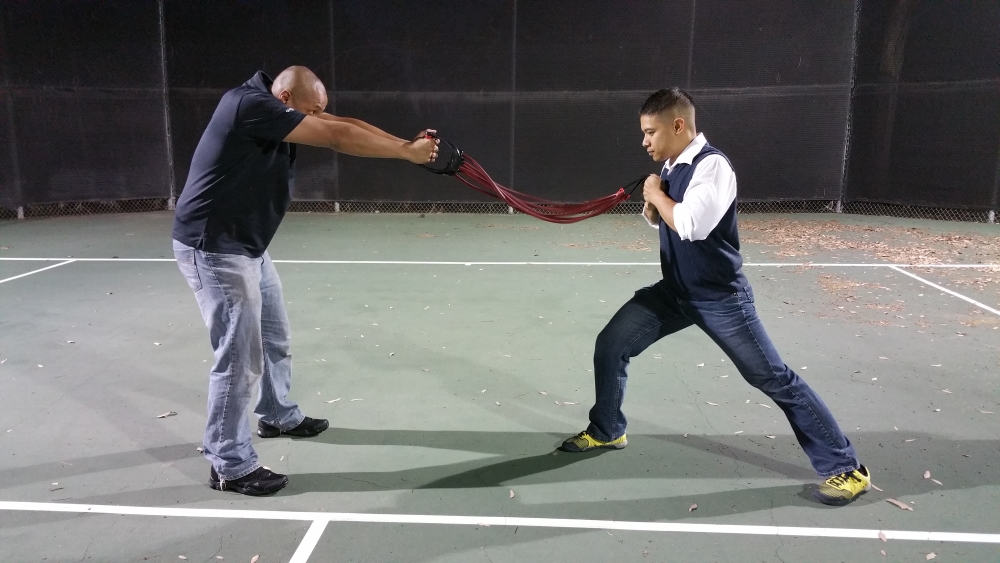
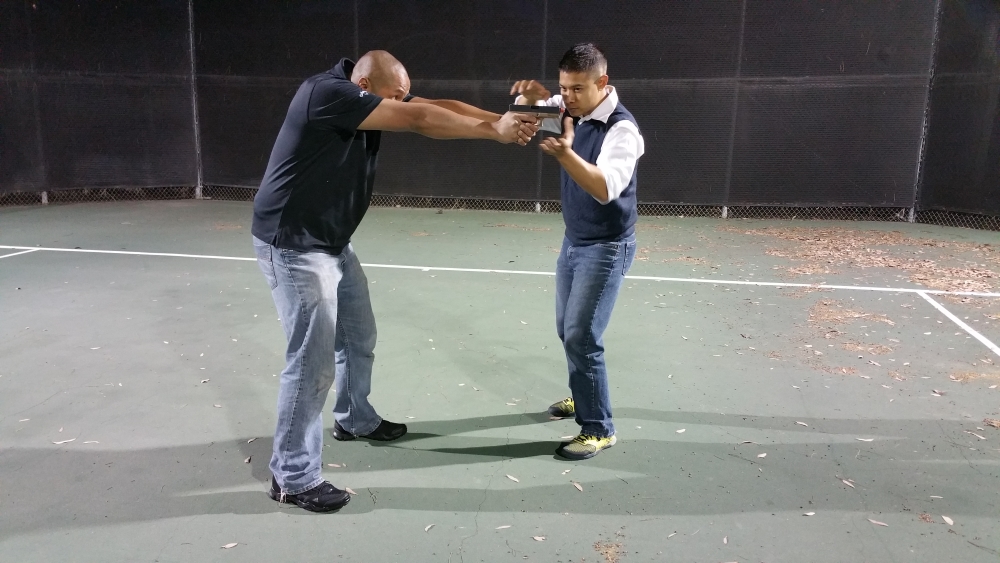
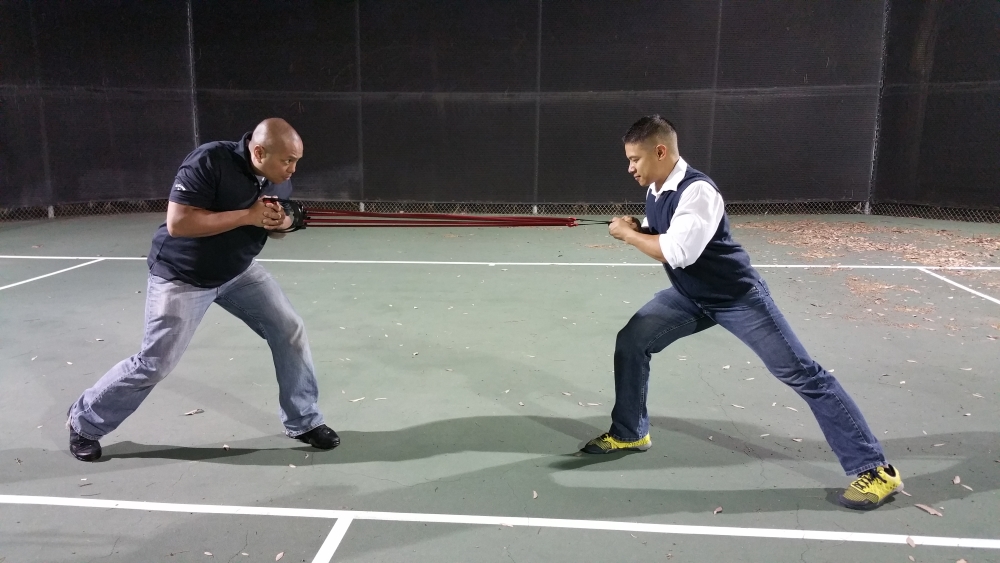
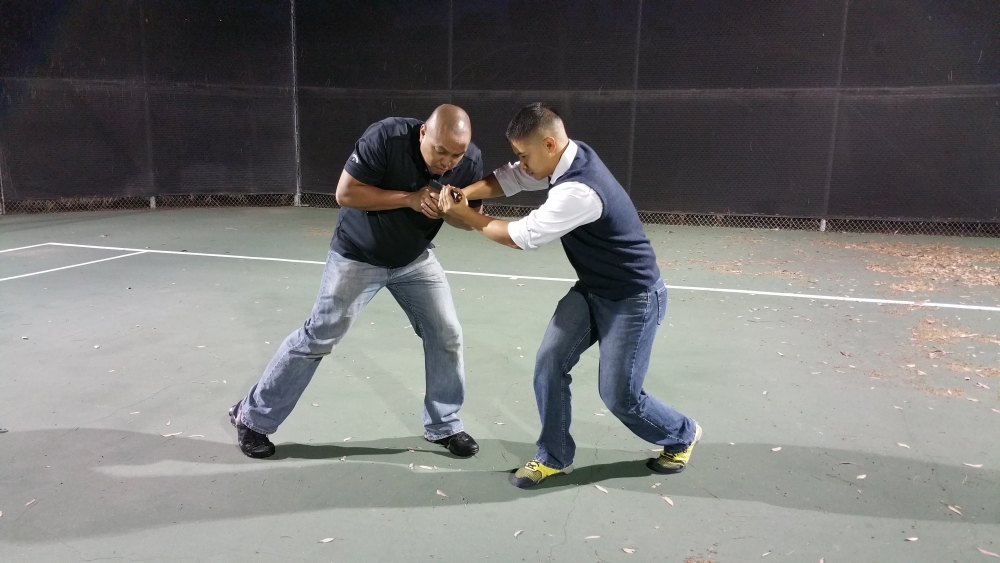
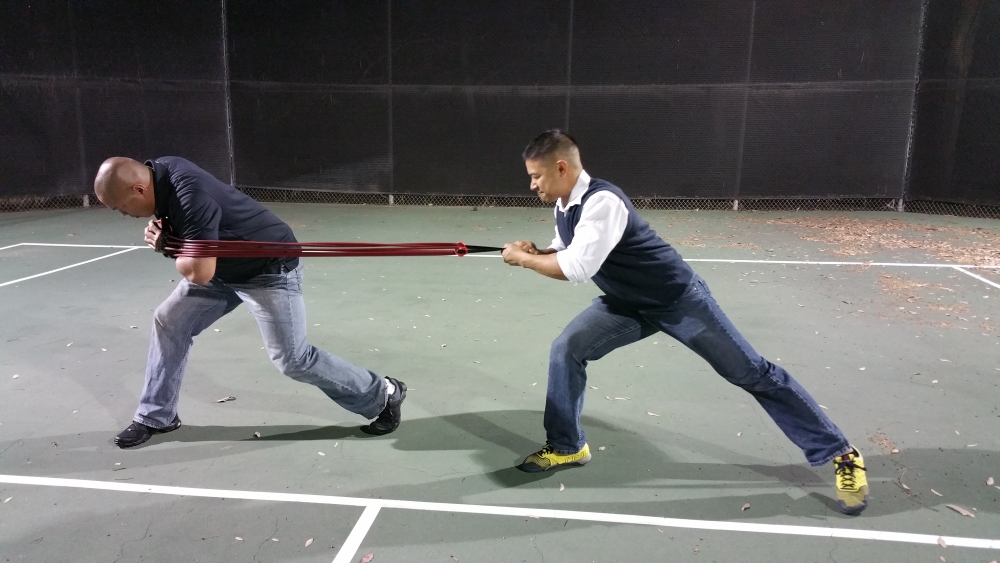
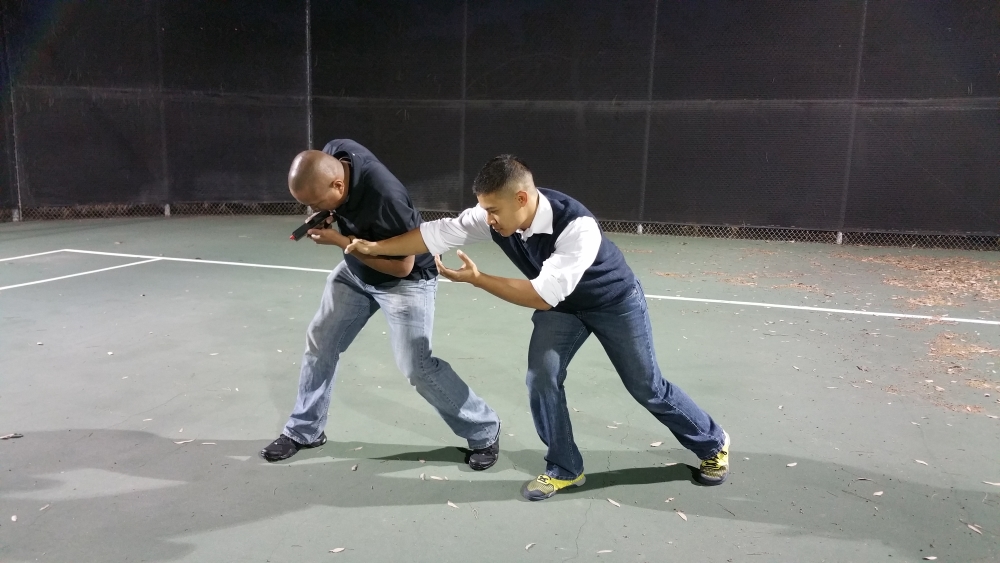
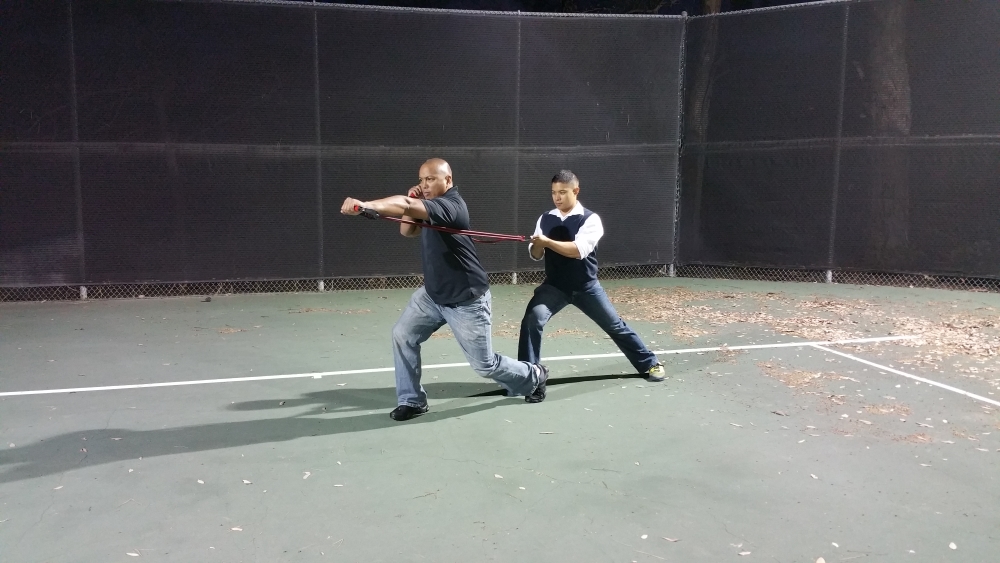
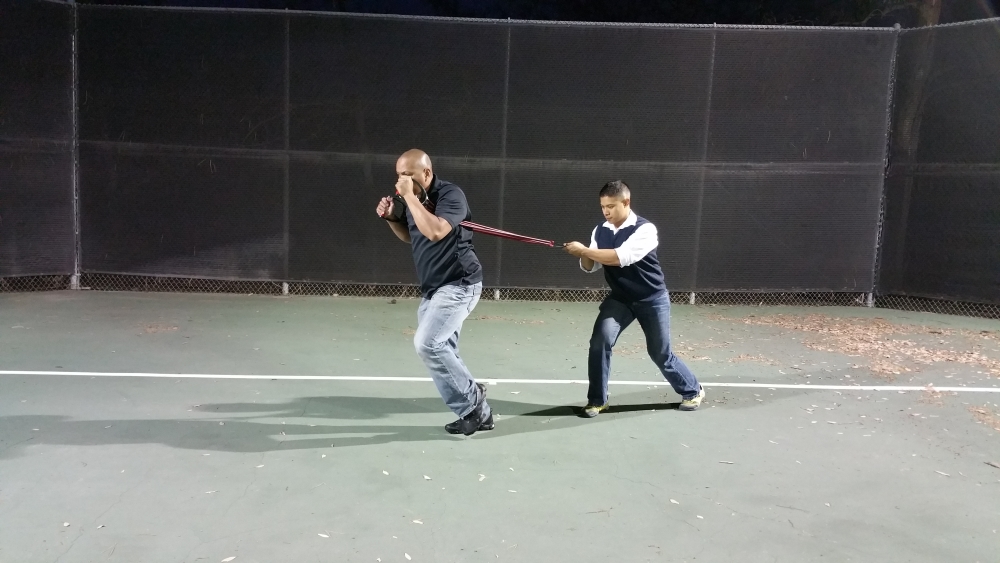
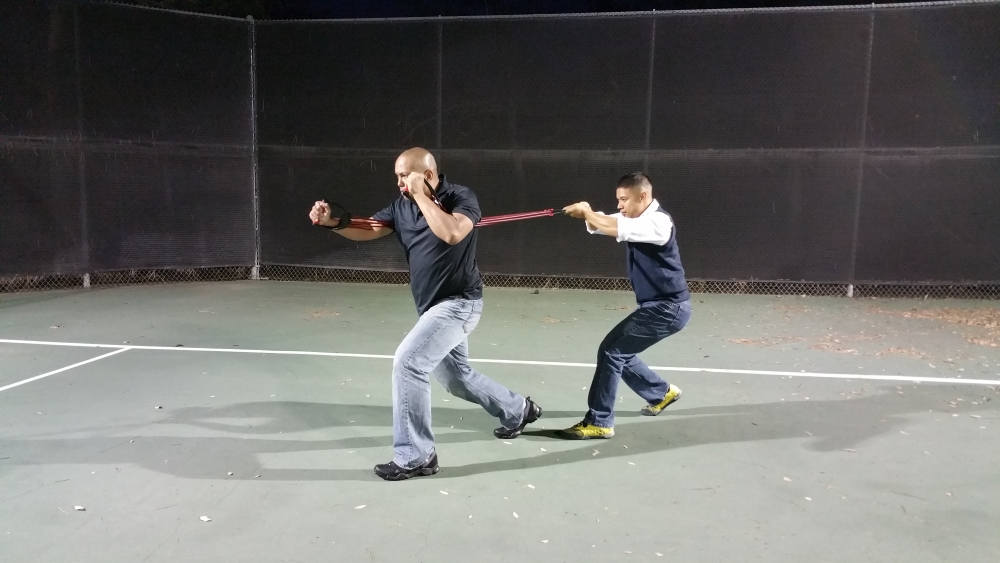
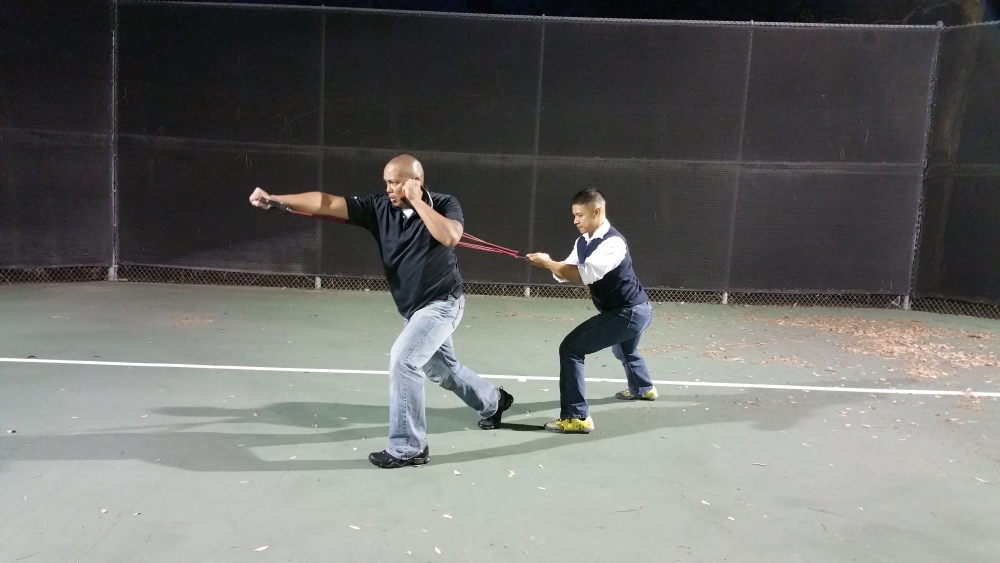
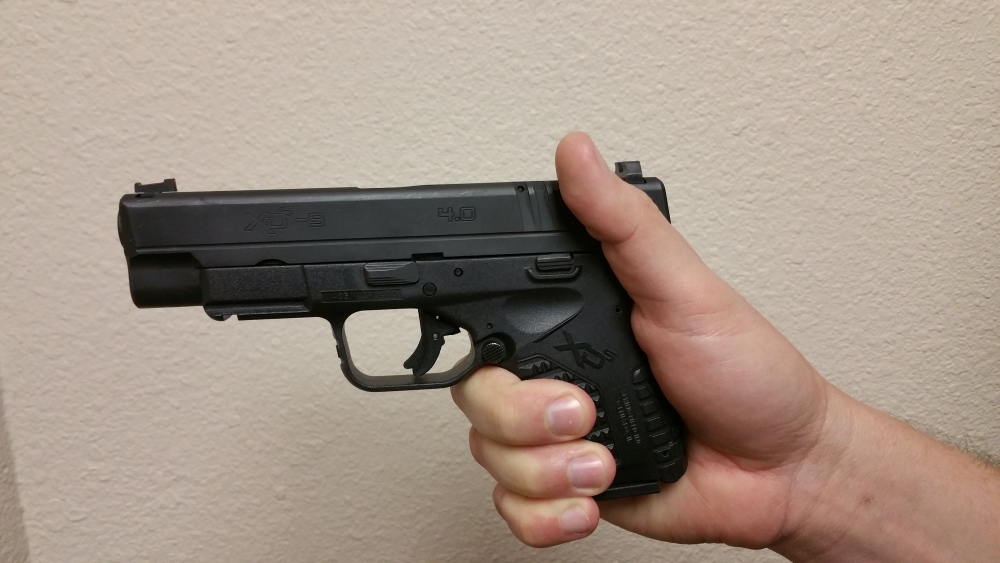
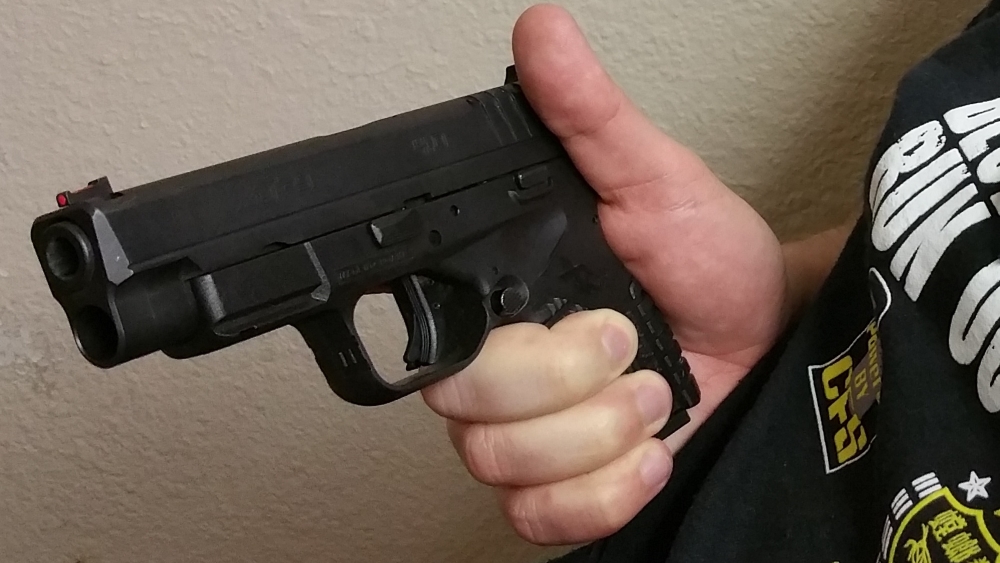

AT 80 plus years of age, no matter how much I train and am in "good shape for my age" it is the last three words that spell reality. I can run about as fast as a four-year old, I have the muscle strength of a physically fit eleven-year old and have the endurance of perhaps a fifteen-year old over distance simply because my mind is tougher than even the most physically fit fifteen-year old and for running fifty miles, it is mental toughness as opposed to physical fitness. As for the double-action/single-action fable, it is just that. I grew up shooting double action revolvers in both modes and it takes no effort at all to switch from one mode to another. If you have difficulty with DA/SA you just aren't practicing enough. Dry firing is the answer to getting beat up by too much recoil. Talk to most professional top grade shootists and they will tell you they spend far more time dry firing than they do sending lead downrange, even though they may fire tens of thousands of rounds a year. That will tell you something if you are actually listening.
I'm a 40 year veteran as a marital arts instructor, and believe in a good exercise program for overall health. The term body-as-a-weapon is in my opinion being used out of context here. In order to inflict the most damage to an opponent, one must know something about the human body. How to strike where, the weakest points, the nerve system, muscle and bone structure, and how to deliver the most effective techniques, in the quickest possible manner. Just having an exercise program that uses muscles in the like manner of a fighter, won't do much good in a close up fight if one does not know something about the above.
Functional exercises make excellent and appropriate fit for duty type reality based training. The 6 Ps of Operational Readiness.
All the pictures, articles on practicing, ammo, upgrades on firearms, selection of the correct firearm for us are all very necessary in your defense and education. This information is very much needed. There is one concern and that is the punishing recoil that many hours that we all have to go through in practice and to train to learn and mange our equipment. I am 60 years old and I enjoy the workout that training can offer, but the recoil can wear your hands and fingers out some. Younger people can recover faster, but then we can slow down some and the pain and muscle cramps (NERVES). I have a .44 Magnum, but that can hurt you in a faster time, I stayed with the 9mm and .40 caliber (Standard grades). Is there any hope to slow the wear and tear down?
Great information about the exercise phasing and content, but most people are going to have a hard time knowing what this guy is talking about. Simplify the language to the target audience please.